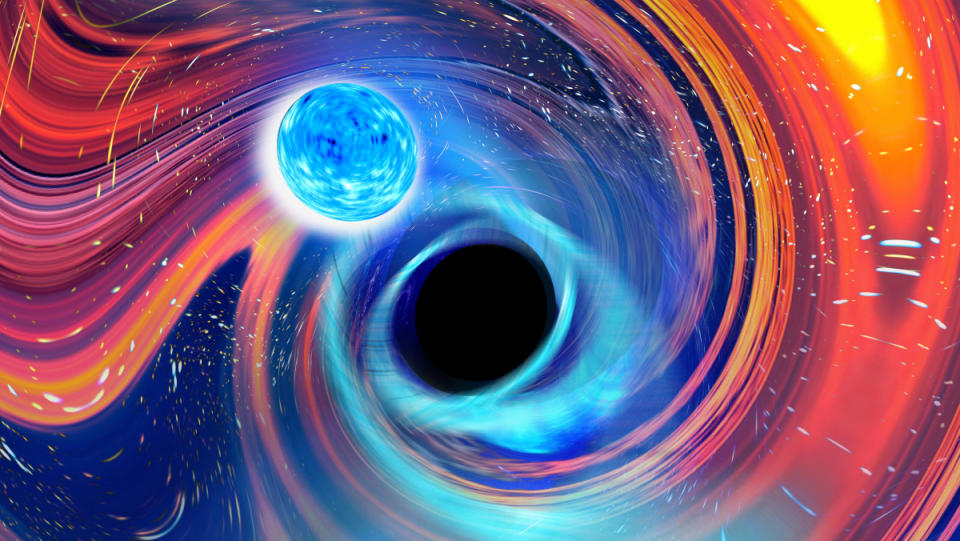Gravitational Waves Reveal First-Ever Neutron Star and Black Hole Pair
Good news, everyone! There’s now been another big show of how gravitational waves can be used to discover novel features of the universe. Astronomers at LIGO and its sister facilities say they have the first-ever direct evidence of black hole-neutron star binary systems. The scientists at the gravitational wave observatories say these findings represent “a completely new kind” of system. Previously, only pairs of black holes or pairs of neutron stars were responsible for all the other gravitational waves scientists have detected.

Science News reported on the detection of the binary systems, which came on January 5, 2020. On that day, the LIGO Detector in Louisiana and the Advanced Virgo detector in Italy picked up on a series of gravitational waves—ones that astronomers now believe stemmed from the last few decaying orbits between a black hole and neutron star. After a thousand years of gravity binding the two together in a twirling, cosmic dance.
“Black hole and neutron star pairs [are] indeed for astronomers the missing binary,” Astrid Lamberts, a researcher at the Virgo detector said in a press release. “With this new discovery, we can finally begin to understand how many of these systems exist, how often they merge, and why we have not yet seen examples in the Milky Way,” the researcher added.
The astronomers determined the makeup of the binary systems using information encoded in the gravitational waves. Based on the size and frequency of the ripples in the fabric of spacetime, the astronomers gleaned their sources. Objects must be extremely dense to form gravitational waves we can detect here on Earth. And astronomers estimate that any object with a mass five times or more than our Sun’s is a black hole.
In the video above, the astronomers show a visualization of how these binary systems exist in stasis and then collapse. In essence, in each system, the black hole and neutron star orbit each other at exceptionally rapid speeds. That is until the overwhelming gravitational pull of the former celestial body sucks in the latter one. Neutron stars, incidentally, are the ultra-dense, leftover cores of massive stars. Also note that as they dance around each other, the two bodies kick off gravitational waves; releasing a final set of them just before the black hole swallows the neutron star.
Today @LIGO @ego_virgo & @KAGRA_PR have exciting news: the first ever confirmed detections of a #NeutronStar #BlackHole binary merger. Find out more at https://t.co/RKdgwo92IK and read our discovery paper, published today in ApJ letters https://t.co/GlcmP5syJ4 pic.twitter.com/GkPsgIDQkp
— LIGO (@LIGO) June 29, 2021
“The fact that we have now detected the three types of binaries will help us to develop theories that explain the properties of all of them consistently,” Lamberts added in the press release. “In fact, this discovery allows us to deepen our knowledge of the most extreme phenomena in the universe; helping us better understand which mechanisms may have generated them.”
The post Gravitational Waves Reveal First-Ever Neutron Star and Black Hole Pair appeared first on Nerdist.

